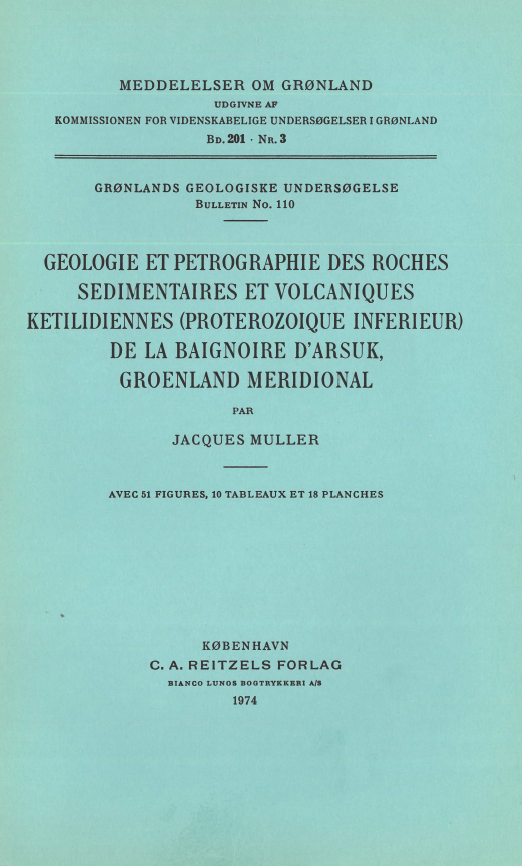Géologie et pétrographie des roches sédimentaires et volcaniques kétilidiennes (proterozoique inférieur) de la baignoire d'Arsuk, Groenland Meridional.
DOI:
https://doi.org/10.7146/mog.v201.147417Abstract
The Arsuk Ø area is situated along the north-western border of the Early Proterozoic (> 1750 m. y.) mobile belt of South Greenland. Around Arsuk Ø reactivated Archaean (> 2500 m. y.) basement is represented by gneiss, amphibolites and migmatites belonging to several lithological series. In the Arsuk basin Earl y Proterozoic ( Ketilidian) supracrustals consist of a group of sedimentary rocks which is overlain by a group of volcanic rocks. The sedimentary Ikerasârssuk Group, with a thickness between 1000 and 1500 m, consists of semi-pelites and pelites with several zones of pyrite-bearing graphite schists and dolomitic limestones. There are also numerous sills of basic rocks which have the same age as the overlying group of volcanic rocks. In some localities the basal member of the group consists of feldspathic quartzites. The volcanic Arsuk Group, the upper part of which is eroded away, has a measured thickness of 4200 m. It consists of pillow lavas, basic massive lavas, volcanic breccias, lapillis and tuflites. There are also some ultrabasic rocks and thin horizons of pyrite-bearing graphite schists with chert. These supracrustal rocks underwent intense deformation at the close of the Early Proterozoic. Three phases can be recognised. The first phase produced N-S to NNE-SSW recumbent folds and the regional schistosity. Refolding during the second phase resulted in folds with E-W to ESE-trending axial planes and a strain slip cleavage. The last phase produced N-S trending structures. The grade of metamorphism during the first phase of det'ormation corresponds to greenschist facies. In the supracrustals close to the basement recrystallisation in amphibolite facies took place between the first and third phases of folding. This shows the existence of a gradient towards still higher grade metamorphic conditions in the underlying Archaean basement undergoing therough reconstitution at the end of the Early Prol.erozoic. As a result of the deformation the stratigraphical unconformity between the Early Proterozoic ( Ketilidian) supracrustals and the Archaean basement has been destroyed. During the Gardar period (Middle Proterozoic: > 950 m.y.) and again during the Mesozoic faulting and dyking occurred.

Downloads
Published
How to Cite
Issue
Section
License
Coypyright by the authors and the Commision for Scientific Research in Greenland. No parts of the publications may be reproduced in any form without the written permission by the copyright owners.

